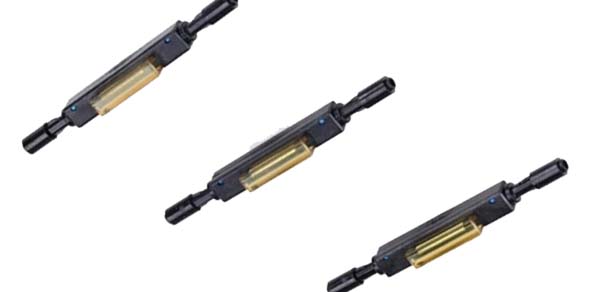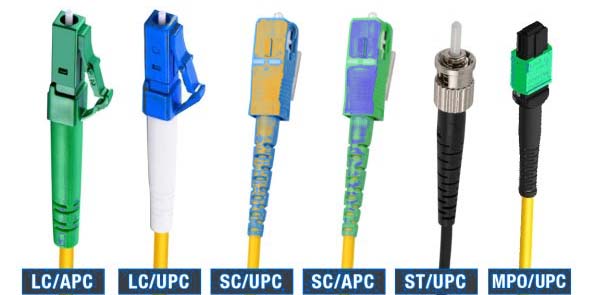By Echo | 25 February 2025 | 0 Comments
How Do You Connect Fiber Optic Cable?
Fiber optic cables are crucial components for transmitting high-speed data over long distances, but connecting them requires precision and attention to detail due to the delicate nature of the glass fibers. Whether you're working on a network installation or maintenance, understanding the methods used to connect fiber optic cables will ensure the reliability and efficiency of your network. There are primarily three methods for connecting fiber optic cables: fusion splicing, mechanical splicing, and using connectors. Each method has its own advantages and considerations, making it essential to select the right one based on the application.


A visual pic for the process of connecting fiber optic cables:
Fusion Splicing: The Highest Quality Connection fo Fiber Optic Cables
What Is Fusion Splicing?
Fusion splicing is one of the most commonly used methods for connecting fiber optic cables. It involves the precise alignment of the two fiber ends followed by an electric arc that fuses the fibers together. This method ensures a seamless connection with minimal signal loss.How Does Fusion Splicing Work?
The fusion splicing process begins with preparing the fiber. This involves stripping the protective coating from the fiber to expose the delicate glass core. Afterward, the fiber is cleaved using a specialized tool, ensuring that both ends are flat and clean. The fibers are then aligned with extreme precision to ensure proper light transmission. Finally, a fusion splicer, a highly specialized tool, generates an electric arc that melts and fuses the fiber ends, forming a strong and durable connection.Advantages of Fusion Splicing
- Low Loss and Strong Connection: Fusion splicing provides the lowest signal loss compared to other methods, making it ideal for high-performance, long-haul applications where data integrity is crucial.
- High Performance for Long Distances: Because of its superior reliability, fusion splicing is the preferred method for fiber optic cables used in undersea cables, long-distance telecommunications, and data centers.
Disadvantages of Fusion Splicing
- Costly Equipment: Fusion splicing requires expensive equipment, specifically a fusion splicer. The cost of this equipment may be a limitation for some smaller projects.
- Skilled Labor Required: To ensure optimal performance, fusion splicing requires skilled technicians who are experienced in handling fiber optics.
- Less Portability: Fusion splicing tools are not as portable as mechanical splicing tools, making it less practical in field installations or emergency repairs.
Mechanical Splicing: Faster and More Portable to Connect Fiber Optic Cable

What Is Mechanical Splicing?
Mechanical splicing is a quicker and more portable alternative to fusion splicing. This method involves aligning the fiber ends using a mechanical splice unit, which holds the two fibers together. A gel or index-matching fluid is used to minimize signal loss, ensuring that light can pass through the splice without major interruptions.How Does Mechanical Splicing Work?
To perform mechanical splicing, both fiber ends are carefully cleaned and prepared. Then, the fibers are aligned in a splice unit that uses a gel or index-matching fluid to minimize signal loss. The fibers are held in place within the splice unit, which is often secured with a protective sleeve.Advantages of Mechanical Splicing
- Faster and Easier to Perform: Mechanical splicing is faster and requires less technical expertise than fusion splicing, making it ideal for temporary connections or installations that need quick turnaround times.
- More Portable: Since mechanical splicing does not require expensive or bulky equipment, it’s more portable, making it suitable for fieldwork and emergency repairs.
- Lower Initial Cost: Mechanical splicing is a more affordable method compared to fusion splicing, which may require specialized equipment.
Disadvantages of Mechanical Splicing
- Higher Signal Loss: Mechanical splicing results in higher signal loss compared to fusion splicing, making it less suitable for long-distance or high-performance networks.
- Less Reliability: While it works well for short-term or less critical installations, mechanical splicing may not be as durable or reliable as fusion splicing, especially in harsh environments.
Using Fiber Optic Connectors: Quick and Convenient Connections

What Are Fiber Optic Connectors?
Fiber optic connectors are another method used to join fiber optic cables, offering a simpler solution than fusion or mechanical splicing. Connectors allow you to terminate fiber optic cables, making it easy to connect them to network devices, patch panels, or other fiber optic cables.How Do Fiber Optic Connectors Work?
Fiber optic connector is pre-installed onto the end of fiber optic cable. These connectors come in various types, such as SC, LC, ST, and MPO/MTP, each designed for specific applications. Once the connectors are installed, they can be easily plugged into compatible ports or devices. Unlike fusion and mechanical splicing, no special equipment or extensive labor is required for the process.Advantages of Fiber Optic Connectors
- Quick and Easy Connection: Fiber optic connectors are fast and easy to use, allowing for quick and convenient connections and disconnections between fiber optic cables and network devices.
- Flexibility in Network Design: Using connectors enables network flexibility, as they allow for quick changes in network design or configuration without the need for complex splicing.
- Standardized Connections: Fiber optic connectors come in standardized formats, ensuring that they are compatible with a wide range of fiber optical transceivers, patch panels, and other networking devices.
Disadvantages of Fiber Optic Connectors
- Potential Signal Loss: While connectors offer convenience, they can introduce slight signal loss, especially if the connectors are not installed or maintained properly.
- Susceptibility to Damage: Fiber optic connectors can be damaged if not handled carefully, leading to connection issues and potential signal degradation.
General Steps for Connecting Fiber Optic Cables
Regardless of the method used—fusion splicing, mechanical splicing, or connectors—certain general steps are involved in connecting fiber optic cables.1. Prepare the Cable
Before connecting the fiber optic cables, you must first prepare them by stripping away the outer jacket and protective layers. This exposes the delicate glass fiber core, allowing for the connection process to proceed.2. Clean the Fiber
Once the cable is stripped, it is crucial to clean the fiber thoroughly. Use isopropyl alcohol and a lint-free wipe to remove any dust, debris, or contaminants that could impair the connection. Clean fibers ensure that the light signals will be transmitted clearly and efficiently.3. Cleave the Fiber
Cleave the fiber to create a clean, flat end. This is crucial for ensuring that the two fiber ends align perfectly, as any unevenness can result in a poor connection and loss of signal.4. Align the Fibers
Align the two fiber ends carefully. Precision is key in ensuring that the fibers meet perfectly and that the light signals can pass through without significant loss.5. Connect the Fibers
Now, depending on the method chosen, connect the fibers. Whether through fusion splicing, mechanical splicing, or using fiber optic connectors, ensure the fibers are joined securely and effectively.6. Test the Connection
After completing the connection, use an Optical Time-Domain Reflectometer (OTDR) or another testing device to verify the quality of the connection. This step is essential to ensure that there is no significant signal loss or degradation.A visual pic for the process of connecting fiber optic cables:
Important Safety Precautions When Working with Fiber Optic Cables
When working with fiber optic cables, safety is paramount. Fiber optics are made of glass, and fiber shards can be sharp and hazardous. Therefore, always take the following safety precautions:- Wear Safety Glasses: Always protect your eyes when working with fiber optic cables, as fiber shards can be difficult to see and may cause injury.
- Dispose of Fiber Scraps Properly: Fiber optic cables are made of fine glass, which can be dangerous if not disposed of properly. Use a designated container for fiber scraps to prevent injury.
- Avoid Looking into Fiber Optics: Never look directly into a fiber optic cable, especially when it is active. The laser light can damage your eyes.
The Role of Rollball in Fiber Optic Connectivity
As a leader in the fiber optic communication industry, Rollball specializes in providing high-quality fiber optic transceivers, cables, and accessories that cater to various industries. Rollball’s products are trusted by customers worldwide for their reliability, performance, and competitive pricing. Whether you are working with fiber optic cables, connectors, or transceivers, Rollball’s extensive product range ensures that your network remains robust and efficient.A Seamless and Reliable Connection for Fiber Optic Cable
Connecting fiber optic cables may seem daunting at first, but with the right tools and techniques, it is an accessible process that ensures high-quality, reliable communication. Whether you are using fusion splicing, mechanical splicing, or fiber optic connectors, understanding each method’s advantages and limitations allows you to select the most appropriate one for your needs. The precision and care involved in the process are well worth the effort, ensuring high-speed, long-distance data transmission for a variety of applications. Always keep safety in mind, and trust in high-quality products like those provided by Rollball for a successful and seamless fiber optic connection.Leave a Reply
Your email address will not be published.Required fields are marked. *